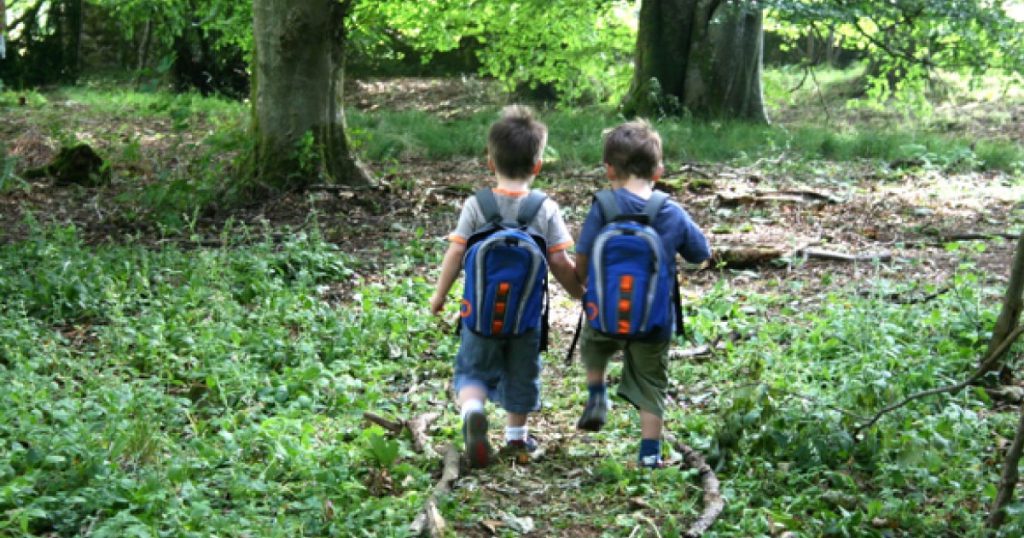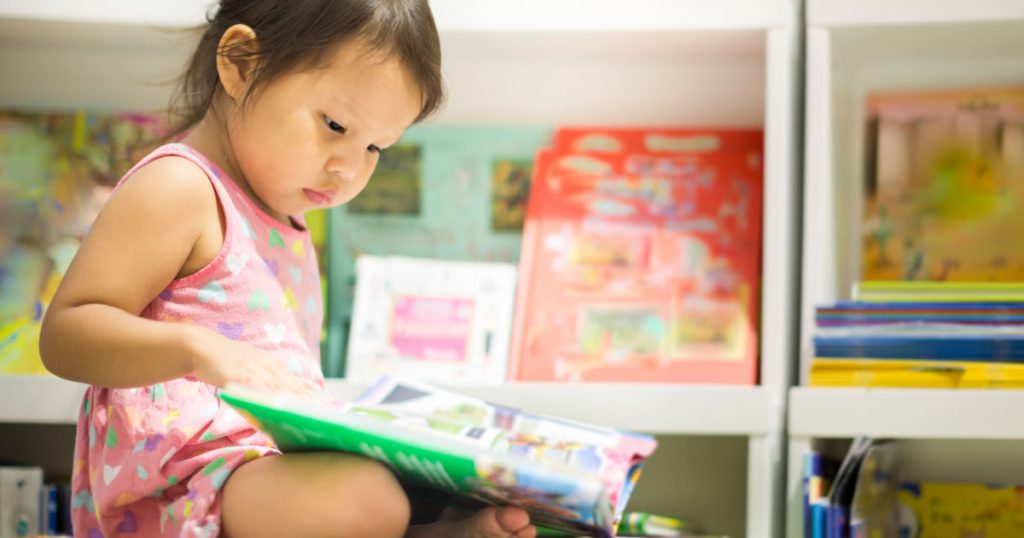
Using robots to support children’s social and emotional development: A five-step framework
In an early learning centre, George (3 years and 8 months old) and Theo (4 years and 2 months old) are playing with a LEGO BOOST robot that is coded via a tablet. Their educator is guiding their play, as this is a new addition to the portfolio of robotic toys at the centre. The educator explains to the children how the toy works and then steps back to let them explore it. Both children start following the instructions. After a while, Theo brings some small wooden blocks and tells George that they can build a bridge and code the robot to demolish it. They both build the bridge and try to code the robot [free-flow play]. Their first two coding attempts are not successful. They then ask their educator for help. With the help of the educator, they try again and are successful in coding the robot and getting it to demolish the bridge. Next, they use LEGO pieces and make a house. They again want the robot to demolish the house. This time they code the robot successfully on their own by instructing each other and ‘reflecting’ on what they had learnt from the educator.
In this case study, George and Theo co-create a scenario with the robot as a central character in their story and narrative. The use of robotic toys is a play-based, creative-inquiry approach that can help in developing social and emotional competencies in all children, including those with diverse needs and abilities.
Children’s social and emotional development is critical to their wellbeing and relationship-building with their peers and adults. Research has highlighted time and again that all new activities offered to children must be meaningful. This requires activities to be based on what children can already do (their schemes) and/or know (their schemas). It is crucial to support children’s emergent learning in free play, even if they are playing and tinkering with advanced technologies such as robots. When educators build upon what a child ‘can do’, they provide emotional scaffolding to the child’s emergent learning. For example, for a child with diverse language needs or communication delays, the ability to build friendships may be a skill that needs explicit scaffolding—which can be facilitated most naturally through a free-play scenario such as one described in the case study.
Recent research from Australia, England, Scotland and Norway has developed compelling evidence for the need to harness the unmet potential of robotic technologies in building children’s social and emotional competencies (Arnott et al., 2020; Kewalramani et al., 2020, Palaiologou et al., 2021). Robotic toys can be used as a play-based, creative-inquiry approach to develop children’s social interaction with their peers, carers, educators and families in everyday natural learning environments. Through playful exploration of robotic toys, children can be provided with opportunities to collaborate with their peers/siblings (for example, via role play), while the pre-programmed functions of these toys (such as represent anthropomorphised characters or real/imaginary animals) and codable features can allow children to exercise choice and control. The features are haptic (digital touchscreen interface), audio–visual, tactile and movement-related and thus offer ‘free-flow play’ type affordances (in contrast to traditional 2D/3D non-interactive toys).
Through play with robotic toys children also start developing meta-cognitive skills (ways of knowing/understanding their everyday world, forming social relationships through self-regulation of emotions, and persisting in collaborative play actions with the robot). Children learn to do this by drawing on their knowledge and experience and responding to the stimulus offered by the robot.
The following pedagogical steps provide an example of the processes of learning that are involved in children’s free-flow play with robots. Early childhood educators can use these steps to plan for children’s free-flow play and creative inquiry with robotic toys.
| Step | Activity/actions |
| Planning | Co-design activities and provocations based on children’s existing schemes (strengths and interests). Introduce the robots intentionally via play-based demonstrations and allow children to tinker with them freely but safely. |
| Emotional scaffolding through problem-based scenarios | Through story-telling and empathy-based situations, engage children in inquiry-based conversations. Encourage them to use verbal communication skills to share their ideas. For example, finding solutions to a problem centred around the robot (such as the robot might be running out of battery, or a bridge might fall down on the robot—ask the children how they might save the robot from dying. |
| Building children’s creative-inquiry skills | Allow ‘wait, think, share’ time for children to brainstorm with their peers on how to solve the posed problem. Generate a social–emotional learning environment where the robot is the central theme in the children’s stories. Support the children in programming/coding the stories and tasks for the robot to perform or act out/role play. Give them time to understand social cues, such as turn-taking while speaking, and regulate behaviour while communicating with their peers. Ask open-ended questions to generate inquiry conversations amongst the children and let them think out loud while proposing solutions to the posed problem. |
| Promoting adult–child, peer–peer and child–robot interactions | Note the multi-interactions between the adult, child and the robot (remember the robot can also move, talk, act, smile, laugh). Examples of interactions include children posing a question or a problem, response to a question, communicating a solution to the problem, hands on experimentation (coding the robot) to solve a problem. Educators should invite children to represent their thinking through drawings and constructions using, for example, blocks and everyday materials (blending of physical and digital modalities). |
| Sharing of children’s ideas and representations emerging from robotics free play | Allow time for whole-group discussions and invite children to share their emergent ideas, constructed artefacts and drawings. This enables a deeper and richer learning experience, fostered through a social and emotional inquiry process. |
Robotic play gives children agency, develops their self-esteem, and helps them see themselves as active learners and problem-solvers in their own enacted stories. It gives them opportunities to learn through observing, modelling and imitating of behaviours, when appropriately scaffolded by educators. The robot, when placed within children’s learning environment, provides a ‘schema’—a context to generate empathy-based situations and problems, keeping the robot as the central character at the heart of children’s self-generated inquiry. Educators in early learning settings need to effectively integrate robots as ‘toys and/or tools’ that have educational value and can support children’s play and inquiry—which is the most effective context for learning.
| This post is a shortened version of the article originally written by the authors for STEM | ED Magazine. |
References and further reading
- Arnott, L., Kewalramani, S., Gray, C., and Dardanou, M. (2020). Role play and technologies in early childhood. In Z. Kingdon (Ed.), A Vygotskian analysis of children’s play behaviours: Beyond the home corner. (pp. 76-92), Routledge.
- Kewalramani, S. (2019, September 13). Why preschool is the best time to spark an interest in STEM. TeachSpace. https://www.monash.edu/education/teachspace/articles/why-preschool-is-the-best-time-to-spark-an-interest-in-stem
- Kewalramani, S., Palaiologou, I., & Dardanou, M. (2020). Children’s engineering design thinking processes: The magic of the ROBOTS and the power of BLOCKS (electronics). Eurasia Journal of Mathematics, Science and Technology Education. https://doi.org/10.29333/ejmste/113247
- Kewalramani, S., Palaiologou, I., Arnott, L., & Dardanou, M. (2020). The integration of the Internet of Toys in early childhood education: A platform for multi-layered interactions. European Early Childhood Education Research Journal, 28 (2), 163–166. https://doi.org/10.1080/1350293X.2020.1735738
- Kewalramani, S., Ellis, K., & Kidman, S. (2020, June 4). How to build a more inclusive STEM program in early childhood using robotics and conductive blocks. TeachSpace. https://www.monash.edu/education/teachspace/articles/how-to-build-a-more-inclusive-stem-program-in-early-childhood-using-robotics-and-conductive-blocks
- Palaiologou, I., Kewalramani, S., & Dardanou, M. (2021). Make-believe play with the Internet of Toys: A case for multimodal playscapes. British Journal of Educational Technology, 1–18. https://doi.org/10.1111/bjet.13110
- Siraj-Blatchford, J., & Brock, L. (2019). Grasping the confidence to achieve their potential. Early Years Educator, 21(4).
- Siraj-Blatchford, J., & Brock, L. (2019). How to scaffold learning through free-flow play. Early Years Educator, 21(3).
Authors
Sarika Kewalramani (see bio further down), Ioanna Palaiologou, John Siraj-Blatchford and Maria Dardanou
Dr. Ioanna Palaiologou has worked as a university academic in the UK for the past 20 years. She is a Chartered Psychologist of the British Psychological Society (BPS) with specialism on child development, learning theories and assessment, and she was appointed as Associate Fellow of BPS in 2015. At the 2017 EECERA Annual Conference, Ioanna won the ‘Best Published Paper’ award. Her most popular books are Child Observation: A Guide for Students of Early Childhood (4th ed.) and Early Years Foundation Stage: Theory and Practice (4th ed.), both published by SAGE.
Professor John Siraj-Blatchford is the Founding Director of SchemaPlay, a community-interest company that provides training, research and consultancy in early childhood education and care. SchemaPlay aims to improve learning outcomes for disadvantaged young children and narrow the educational outcome gaps associated with socio-economic, cultural and gender differences.
Maria Dardanou is an Associate Professor of Pedagogy in Early Childhood Teacher Education at UiT The Arctic University of Norway. Her research expertise is in digital technology in the early years, with a special focus on the internet of toys, touchscreen technology and related pedagogical perspectives. She is the Co-convenor of the European Early Childhood Education Research Association’s special interest group on Digital Childhoods, STEM and Multimodality.


